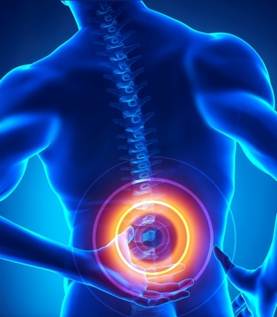
Introduction
At The Spine Surgery London we offer a full range of lumbar spinal surgery in addition to all the diagnostic and non-operative alternatives to that surgery.
Our aim is to reduce surgery to a minimum but, when it is required, ensure that you get exactly what you need.
This requires a careful discussion between patient and surgeon covering what precisely the problems are, (leg pain or back pain, pain or weakness etc.), what the various procedures can offer, what the surgery involves, the usual post-operative recovery, the variations there from, the risks and the alternatives both surgical and non-surgical. All procedures have their strengths and weaknesses. Surgery is not always the best option. It is a case of us working together with you to develop the right plan for you, in your current circumstances.
Whilst we are always happy to answer “what would you do” questions, the decision is eventually yours and it is our job to ensure that you are as tooled up to make that decision as you can be. The purpose of this website is to form part of that educational process. It is not designed to stand alone but to be viewed in the context of our discussions and any written information.
Here we discuss mainly surgery for degenerative conditions of the spine – “bad discs”. Some other pathology is covered but the emphasis in this section is on the surgery to relieve back and leg pain from degenerative spinal disorders.
The Basics
It is convenient to consider lumbar surgery in two groups: “keyhole procedures” and “major surgery”.
In broad terms, operations for leg pain/sciatica are keyhole and associated with rapid recoveries and high success rates. In contrast, back pain operations often involve major surgery with prolonged recovery and significant risks.
Keyhole Lumbar Surgery
There are many different keyhole techniques offering so called “minimally invasive” surgery. The smallest is without doubt Endoscopic spine surgery. We cover this in a separate section. It is relatively new and appropriate for some patients who would otherwise have the conventional keyhole procedures described below. If it is relevant to you, it will certainly be covered in our discussions.
However, the gold standard for minimally invasive lumbar spinal surgery is keyhole microdiscectomy, nerve root decompression, and central canal decompression. Some other techniques such as distraction decompression procedures can also be carried out via the keyhole technique. Very occasionally a fusion may be performed keyhole.
This keyhole surgery involves incisions of only 1.5 to 2cm and utilise X-ray guidance to limit the size of the opening and the operating microscope to maximise their safety and accuracy.
Keyhole microdiscectomy and decompression procedures are almost exclusively used to relieve leg pain i.e. sciatica. The aim is to decompress the nerve causing the leg pain and the commonest cause of pressure on the nerve is a prolapsed disc – hence “microdiscectomy”.
Major Lumbar Surgery
There are also a wide variety of surgical procedures for low back pain. In general these involve more major surgery. Whilst usually effective, they are usually something of a last resort. The surgery usually involves removal of a whole disc and the gap has to be filled. Classically, this has involved lumbar fusion though more and more the hope is to preserve or restore motion by using artificial disc replacement.
Lumbar fusion surgery is also be used to help people with an unstable or slipped spine such as those with – spondylolisthesis, scoliosis/deformity/curvature of the spine. Likewise, it may be used in the treatment of fractures or following surgery to remove tumours from the spine.
Lumbar fusion surgery may be performed from the front via an incision on your tummy, (anterior surgery), or via an incision on the back, (posterior surgery).
All artificial disc replacement surgery is performed from the front.
The prime aims of lumbar surgery are usually to relieve one or more of the following:-
- Pressure on the terminal tip of the spinal cord- “the conus”
- Pressure on the lumbar nerve roots- radiculopathy
- Correct any deformity and instability – spondylolisthesis/subluxation
- Restore or preserve movement
The problems the surgery may relieve include:
- Pain in the legs – sciatica
- Pain in the back
- Pins and needles or numbness in the legs
- Weakness in the legs
- Impairment of bowel or bladder function.
- Deformity – curvature of the spine/neck
- Stiffness – reduced range of movement
The challenges are to:
- Preserve or restore as much motion as possible
- Prevent or correct deformity
- Keep access to a minimum
- Ensure the benefit of surgery lasts
The surgery may involve:
- a procedure at single disc or multiple levels/discs
- the removal of disc, bone or ligaments, or other pathology/lesions
- The correction of deformity
- “Reconstruction” with implants/instrumentation, (screws, rods or artificial discs)
- Openings from the front/tummy, (anterior), or back, (posterior).
What we cover here;
Keyhole Lumbar surgery;-
I. Lumbar microdiscectomy and spinal decompression
II. Excision of lesions of lumbar spine and spinal decompression
III. Interspinous process distraction decompression and stabilisation surgery
Major Lumbar surgery;-
I. Artificial disc replacement
II. Anterior lumbar interbody fusion
III. Posterior lumbar interbody fusion
IV. Posterior fusion for Tumour/abscess/scoliosis
We will also cover the implications of these procedures when carried out as Revision Operations. Clearly, if you have had surgery before it will leave scaring and this makes any subsequent surgery more difficult. How much more difficult depends on what precisely you have had done before.